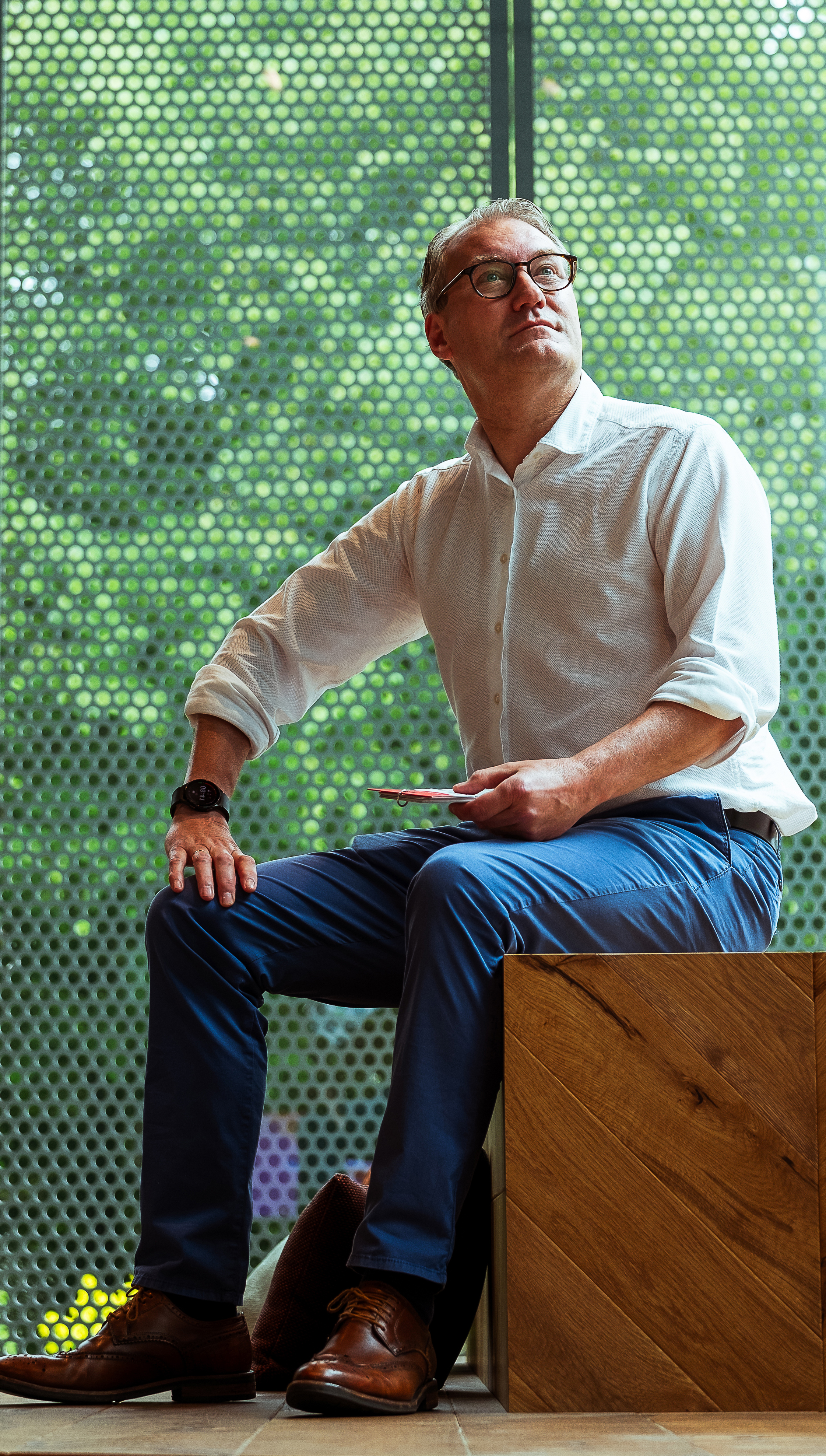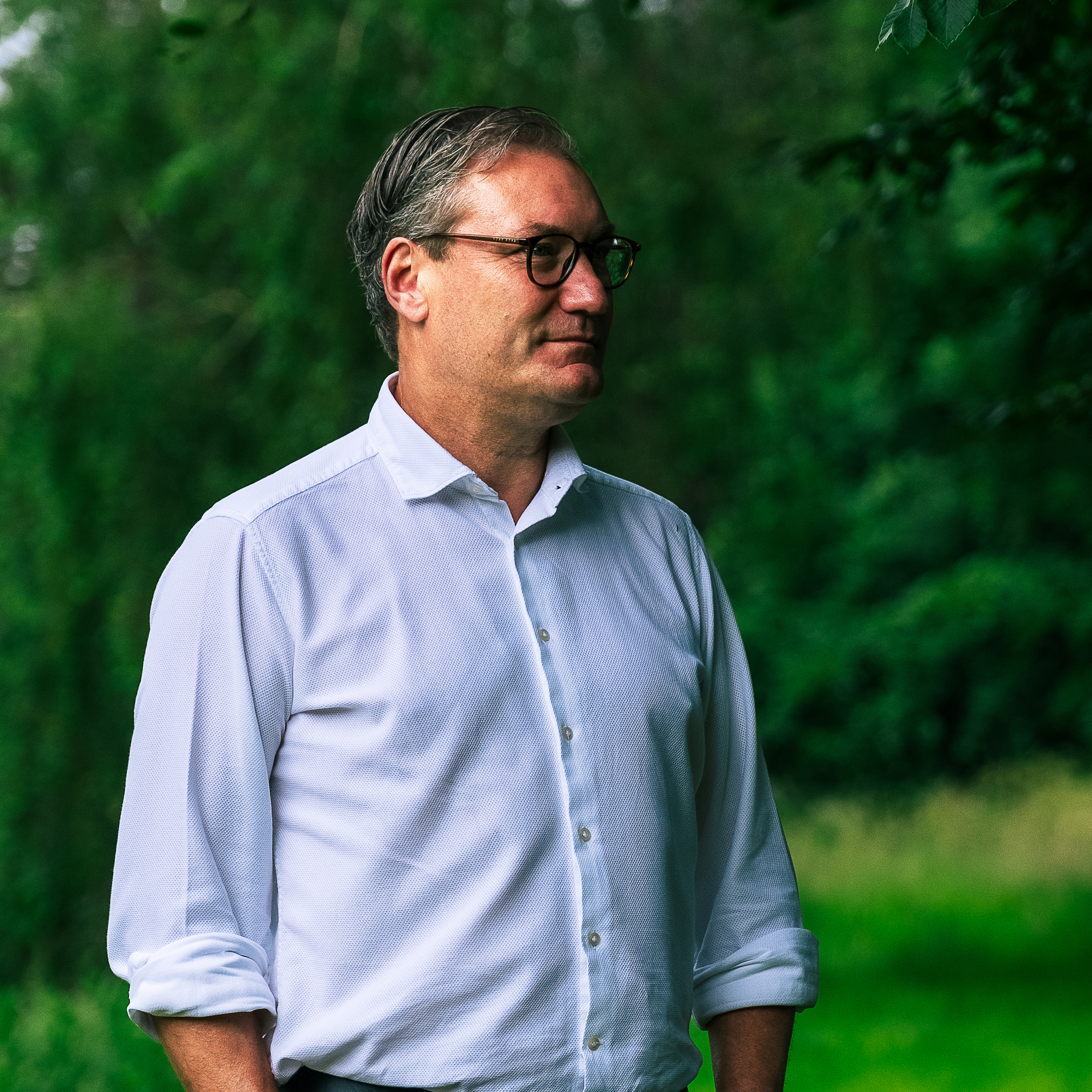Sustainability is a multi-challenge that needs multi-solutions

Manufacturers across the globe are increasing their efforts to offer more sustainable products. But how do you know they’re not greenwashing? The answer is certification. For Lieven Flamée, third-party recognition is essential to bring credible and qualitative solutions to the market.
Lieven Flamée
- Born in Kortrijk, Belgium in 1965
- QHSE director at Beaulieu Engineered Solutions
- Passionate about integrating sustainability into existing business processes and management systems
As Quality, Health, Safety and Environment (QHSE) director at B.I.G., Lieven Flamée is responsible for translating the company’s Route 2030 ambitions – achieving a zero environmental footprint by 2030 – into tangible actions for the different Engineered Solutions divisions, including the Yarns division. With the 2030 deadline approaching, Lieven is optimistic and ambitious about the division’s progress in terms of sustainability.
Lieven, can you tell us why you are optimistic about the Yarns division’s sustainability efforts?
Our roadmap towards Route 2030 is organised across five different routes, and we are working hard on each one of them. So, yes, I’m optimistic about the outcome. Internally, we have all noses in the same direction, everyone is enthusiastic about the journey we need to make.
But also externally, we are able to convince more and more partners and suppliers to work on sustainable solutions with us. Both the commercial and automotive markets have a demand for more sustainable solutions, which is positive for us.
“Cradle to Cradle helps us to put circularity into practice.”
You like to stress the importance of certificates and third-party recognition. One of these certificates is Cradle to Cradle. Why is this such an important certification for B.I.G. Yarns?
Cradle to Cradle offers us a practical and actionable framework to put the concept of circularity into practice. It provides a structured way towards certification, it’s a mature and internationally recognised standard.
We are currently (editor’s note: time of writing is October 2024) working on material health, making sure that the materials used in our yarn products are safe and environmentally friendly. By becoming certified for this category, the market will acknowledge that we are taking sustainability and circularity seriously.
What are the biggest roadblocks you are facing towards reaching the Cradle to Cradle certification?
Being certified for Material Health means that you have to be transparent about the raw materials you are using in your products. Cradle to Cradle wants to know what materials are made of down to a molecular level. But for that, we need full cooperation from our suppliers, who are not always comfortable sharing their inner company secrets, quite understandably by the way. That is sometimes difficult.
It’s for that reason that we rely on third-party certification bodies who can offer non-disclosure agreements. This way, nobody needs to unnecessarily unveil its proprietary knowledge. Convincing our suppliers is a matter of repetition and polite persistence.
What keeps the market from fully embracing circularity today?
The manufacturing cost is still a big hurdle. For companies, it may seem risky to change suppliers when they have been used to working with prices and margins they know. Switching to a new, more sustainable product may be more expensive.
“Sustainability is a multi-challenge that needs multi-solutions.”
This will probably still go on for some time, until companies are triggered to switch to more sustainable products because of national, European or international directives and legislations, like a carbon tax for example. Governments could speed up matters, for example by obliging every new government building to use low-impact products. It’s complex, because will need to find a balance between profitability and sustainability.
It’s also important that we offer our customers different options. We cannot be a one-trick pony. Sustainability is multi-challenge that needs multi-solutions. That’s why we have different solutions in our yarn portfolio: EqoCycle recycled content yarn, EqoYarn low-footprint yarns, and EqoBalance, which uses renewable sources.
And all these sustainable yarn solutions are backed by third-party certifications?
They are. For example, by applying for Cradle to Cradle’s material health certification, we are showing that we want to be fully transparent towards our customers, partners and suppliers. And all the claims we make in terms of recyclability or carbon footprint reduction are backed up by independent, third-party specialists. For example, EqoBalance is REDcert2 certified by TÜV SÜD and EqoCycle is GRS certified by Control Union. Certifications are both a quality label and a sign of credibility. I believe they are crucial in the fight against greenwashing.
B.I.G. also puts a lot of effort into meeting ISO9001 and ISO14001 quality standards, which have sustainability embedded. This way, we are showing that we are always optimizing our processes to become more efficient and more sustainable. It’s about continuous effort, not one-off measures.

How do you see the not so distant future of sustainable yarn manufacturing?
2030 will be an important milestone for us. In the run-up to that year, but also beyond, I expect that more sustainable products will be specified for public buildings. Cost can still remain a challenge for some time. The most substantial progress will be made in those niche markets, and hopefully this will quickly trickle down to other, adjacent markets.
Meanwhile, we can’t afford to sit still. We need to look to ourselves and turn words into actions. This means constantly optimising or rethinking our own processes and encouraging everyone to join the discussion.